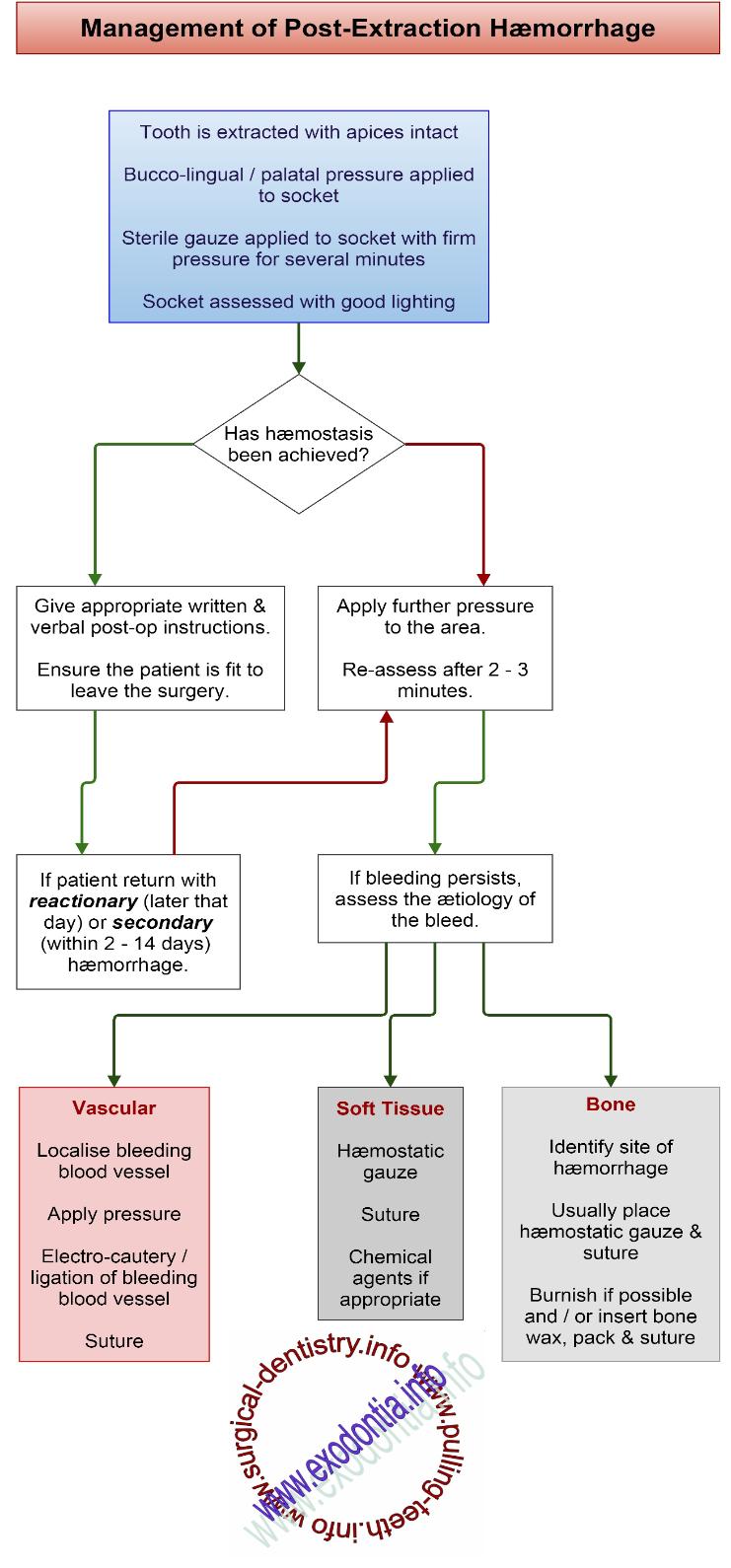Bleeding Sockets
Bleeding Socket (Dento-Alveolar Hæmorrhage)
A degree of blood oozing will occur from the extraction site for the first 24 hours.
If fresh bleeding occurs, pressure should be applied to the extraction site with a pack. This is achieved by placing a rolled hankie, cotton wool or linen directly over the site and biting hard. Pressure should be applied for > 20 minutes (some authorities suggest 45 – 60 minutes) and this should stop the bleeding.
It is both firm pressure and maintaining this pressure over a prolonged period of time that are important factors when this technique is used.
Don’t keep changing the gauze, just put some in and then clamp down on it for a period of time.
If the bleeding seems to persist, a slightly moistened tea bag can be a very effective substitute for gauze.
Black tea contains tannic acid. Tannic acid can aid in the formation of blood clots and this technique can be very effective. (Same instructions as above, just substitute the tea bag for the gauze).
If heavy bleeding is still present then contact your dentist / Oral Surgeon or attend A&E.
Bleeding usually comes from 1 of 3 sources:
- Small gum (gingival) blood vessels (capillaries)
- Blood vessels in the bone of the socket
- A large vessel under a flap or in bone such as the inferior alveolar artery
Persistent bleeding from a tooth socket after dental extraction may be due to:
- reactionary hæmorrhage (2 – 3 hours as the local anæsthetic wears off).
- secondary hæmorrhage (48 – 72 hours and is always indicative of infection). This is more likely if the oral hygiene has been bad.
Management:
- Reassure patient and take a good history (including medical such as blood dyscrasias such as leukæmia or myelodysplastic syndrome, Hæmophilia and von Willebrand’s Disease or platelet disorders and drug history such as use of aspirin, warfarin, heparin or dipyramidole).
- The patient’s pulse, blood pressure and any signs of shock (if the bleeding has been significant) should be checked.
- Wear gloves and an apron.
- In good light and using suction, clean the area and try to identify the source of the bleeding.
- Squeeze the edges of the socket together (this will stop gingival bleeding). Local Anæsthetic and stitching of the socket will stop the bleeding in this case.
If bleeding continues, it is from vessels in bone, which need some form of pack. There is a hierarchy of treatment. If one treatment fails, the next one is moved on to.
Bleeding from the tooth socket can be reduced / stopped by:
- Pressure (gauze)
- ± soaked in adrenaline / transexamic acid
- Stitches ± LA
- ± surgicel / spongostan / hæmocollagene
- ± bone wax
- ± diathermy (cautery)
- ± transexamic acid / ethamsylate IV / tablets


